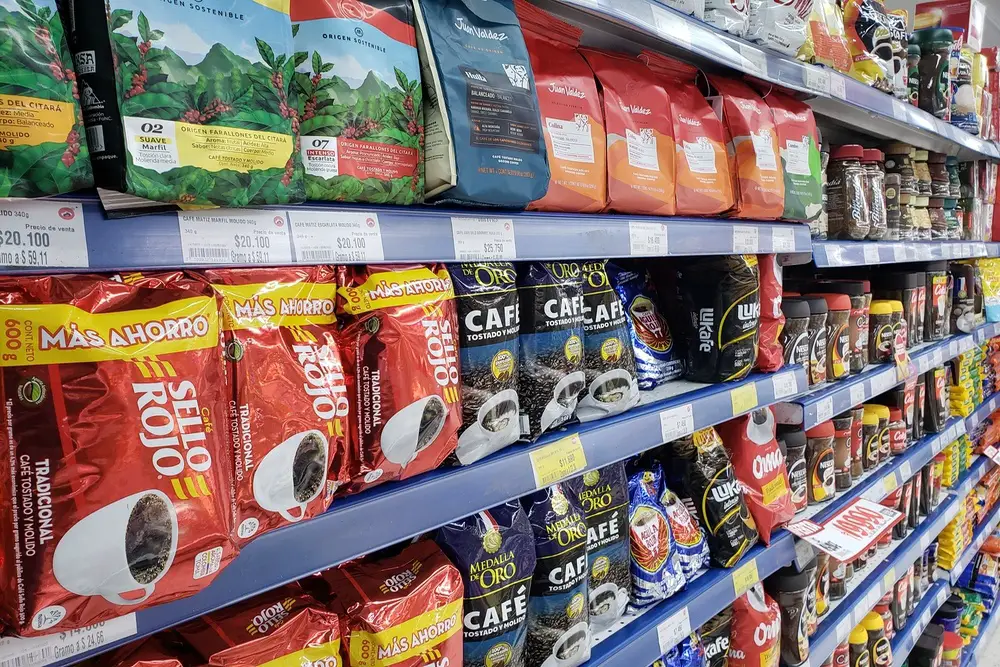As an espresso lover, you may have heard the term “dead espresso” before.
It has everything to do with the espresso’s crema, which is the layer of froth that’s usually on top of the espresso when it’s just pulled out of the machine.
So, an espresso is said to be dead when the crema disappears after a while. Why is the foam so important?
Table of Contents
What is a dead espresso?
As soon as an espresso comes out of the machine, there is a time window. You should enjoy the espresso in this, after which it loses its crema and thus its taste.
Some coffee drinkers claim that an espresso “dies” 60 seconds after dispensing.
However, other coffee drinkers disagree with this theory and do not believe in “dead espresso”.
In fact, there is a myth that some barista trainees are told that an espresso should be thrown away within 10 seconds of being served.
In reality, however, there is no proof of this.
Imagine what a waste of coffee and money it would be if a store tossed an espresso just because the customer didn’t drink it exactly 10 seconds after it was served.
Why does an espresso die?
Several experts agree that the length of time that an espresso retains its aroma is between 2 and 3 minutes.
This is the time it takes for the crema to disappear.
The crema is a layer that forms when water mixes with the coffee’s oils in the presence of CO2 (carbon dioxide).
The crema therefore has no taste of its own, but is very important because it serves as a protective shield against oxidation of the coffee.
The oxidation of the coffee
Oxidation is a chemical reaction that occurs when a material comes into contact with oxygen.
So, oxidation is why we wrap food to keep it fresh, otherwise it will spoil faster.
The same goes for espresso, because when the drink comes in contact with air, it starts to break down, especially the crema.
With the decomposition of the crema, the nuances of the espresso are lost, the sweet, bitter and sour notes disappear while the bitterness comes to the fore.
In addition, high temperatures favor the decomposition process; for this reason, it is advisable to consume the cup of coffee as soon as possible.
Time and temperature are crucial
Something happens with espresso that doesn’t happen with other coffee preparations.
Since it is a small portioned drink, the coffee mass is also small, so it cools down very quickly.
A large cup of coffee (e.g. an Americano) contains much more hot water and therefore takes at least 20 to 30 minutes to cool completely.
In contrast, an espresso cup will be completely cool after 5 to 10 minutes, and its taste may change after as little as 3 minutes.
And this is exactly where the problem lies with espresso, because there is not only oxidation degradation, but also the temperature issue.
It is not very pleasant when a coffee that should actually be hot is cold (not to be confused with cold brew).
But cold is not necessarily bad
Just because a coffee has gone cold doesn’t mean it has gone bad. However, there is a cultural notion that tells us that good coffee should be hot.
So, it’s understandable that many people think that the coffee has gone bad because it’s gone cold.
The truth is, even coffee tasters often let the drink cool while tasting it.
This is because the different properties of coffee unfold at different stages, even after the coffee has been brewed.
Some even claim that the coffee only starts to “lose” after 4 hours.
Do not overheat coffee
Overheated coffee denatures the chemical structure of the beverage faster than oxidation.
Therefore, an overheated coffee tastes bland, tart and very bitter.
But what does a dead espresso taste like?
Even if an espresso starts to “die” you probably won’t notice a difference in taste until after 2 or 3 minutes.
So, you may find the coffee a bit more bitter, but that also depends on how used you are to the taste of espresso.
So, unless you drink espresso regularly, you probably won’t notice a difference.
However, if the quality of the beans isn’t the best, the flavor might degrade faster over time, but there’s no evidence for that either.
On the contrary, some claim that a dead espresso can taste better than a freshly brewed one because the flavors are “muted” when the coffee is hot.
Additionally, they claim that many of the notes present in coffee become more prominent as it cools.
Those who prefer to wait a little (no more than 3 minutes) to drink their espresso claim that a lower temperature makes the flavors more intense and clear (easier to distinguish).
The caramel and chocolate notes should be more intense when the espresso is not that hot.
Is espresso a quick-drinking coffee?
If you ask any espresso purist, they will probably tell you that espresso is meant to be drunk quickly.
They will probably even tell you to drink the espresso within 10 seconds of brewing it.
However, this is somewhat unrealistic, not to mention the inconvenience that the espresso usually comes out of the machine very hot, so drinking it too quickly can ruin the experience.
coffee shop (especially a busy one) is unlikely to serve you the espresso as soon as it comes out of the machine.
On the other hand, if you ask an Italian how an espresso should be drunk, they will probably answer that it should be enjoyed with friends and family.
So, there is no need to rush to drink it, nor worry about the time that has elapsed since the coffee was served.
The myth of the espresso lasting 10 seconds
Does an espresso become less strong after 5 minutes?
If an espresso is left outside for 5 minutes, the caffeine concentration is the same as freshly brewed espresso.
Again, the difference is in the temperature, which is lower.
Crema last in an espresso?
Crema should ideally make up 10% of the volume of a shot, i.e. a good crema should last about 2 minutes on average.
Why does the crema of some coffees take longer than others?
If the coffee is ground too coarsely, most of the coffee particles may not absorb the water.
In other words, not enough is extracted, so some coffee particles get mixed with air and hot water, resulting in a very thin and runny cream that doesn’t last long.
In contrast, with optimal extraction, the crema contains less water and therefore lasts longer.
Summarized
Although the waiting time before drinking an espresso should not exceed 2 to 3 minutes, the coffee never “dies”.
However, once the coffee has cooled down, you should not reheat it, otherwise the taste will change.
In any case, you alone are the absolute judge of the coffee you consume.



